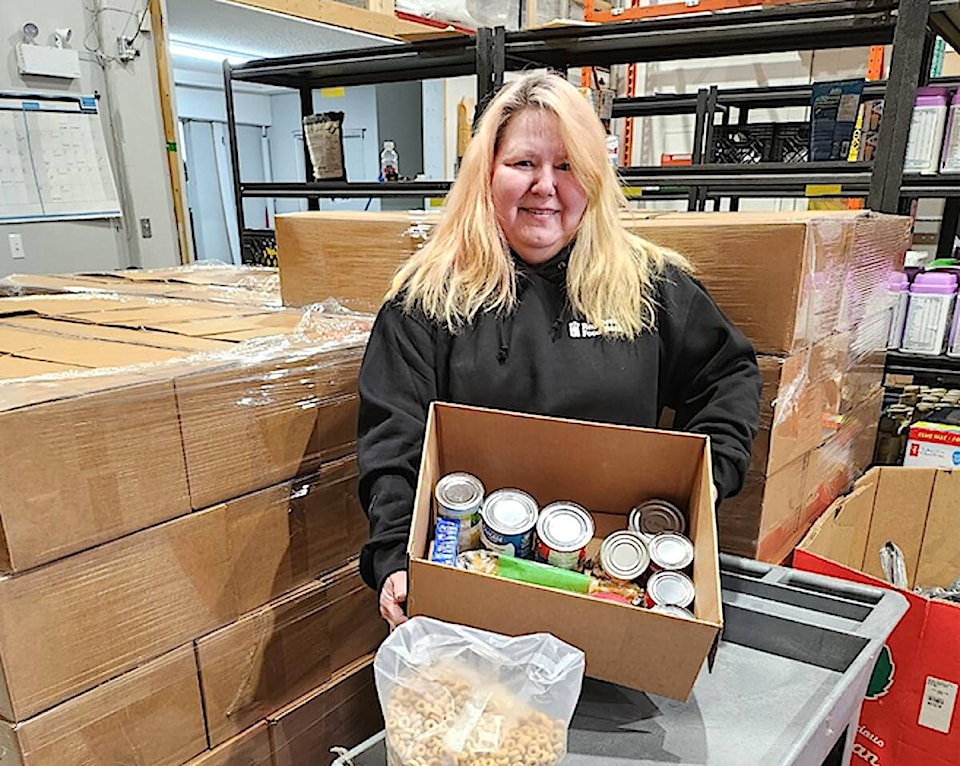High utility bills, rising prices and rents: Red Deer Food Bank intake worker ‘Byrd’ Simmonds hears a lot of sad stories every day from Red Deerians who just can’t get by.
“People say, ‘My rent’s gone up, gas has gone up, groceries have gone up,’… or “My power bill is too much and it dips into my grocery budget,’” said Bernadine Simmonds, an intake worker at the Red Deer Food Bank.
Over her 15 years at the non-profit — the first year as a volunteer and then as an employee doing everything from warehouse work to being operations manager — Simmonds has seen a profound increase in clientele.
The food bank now gets 500 to 600 “walk-ins” a day, she said, which is about double the number from five years ago.
Most of these people, having reached their hamper limit, are still unable to meet all of their food needs. So they come to the food bank’s pantry for additional free vegetables, bread, powered milk, yogurt or any other items that are available.
Demand for veggies or bread, donated just before its expiry date by local grocery stores, is so high that some of these items must be beheld back so they don’t all disappear first thing in the morning. “We spread it out during the day, so there’s some at 9 a.m. and some at 2 p.m.,” said Simmonds.
“The better stuff we put in the hampers, and other usable products we put into our pantry…”
Since last April, the food bank has been averaging 40 per cent more clients, month over month. By December, 68 to 75 families a day were coming in for hampers, compared to 35 to 50 families in previous years.
Simmonds said she has seen food bank usage grow across all age demographics, including families and seniors. And things are not expected to improve in 2023.
With inflation driving up costs, charitable food programs across Canada are bracing for a 60 per cent increase in the number of people who need help putting food on their table.
Earlier this month, Mitch Thomson, the Red Deer Food Bank’s executive-director, said Food Banks Alberta stepped in to provide 225,000 pounds of food to the Red Deer Food Bank last year — and it still wasn’t enough to fill local need.
“We did have to call upon the Calgary Food Bank to send us two truckloads of food as well,” stated Thomson, who mentioned a couple donation events didn’t happen in 2022.
Meanwhile, the local unemployment rate has decreased — which appears to be good news. But people’s wages just don’t seem to be keeping up with costs.
Alberta’s minimum $15 an hour isn’t enough to get people out of debt, for example, said Simmonds.
A simple remedy would be to raise minimum wage. But then the prices of everything would go up too, and many people still wouldn’t be ahead, she added. “It’s a good thing there are food banks…”
As the public need for these non-profits is not lifting, she’s gratified to be able to help people get by.
Central Albertans who can afford to donate can make a difference by dropping off a cash contribution, or in-demand food items, including canned meat and fruit, peanut butter, baby food, macaroni, Kraft Dinner, rice, canned beans and dry soup mix.
Some days, Simmonds admitted, the sad stories really seem to add up, but she can always move to hamper-making and other areas when she needs an emotional break from intake.
“I have sarcastic humour, so I try to make the day fun for my co-workers and for the people picking up hampers,” she added.
“People don’t want to come here, so I try to make it a good situation for them, so they don’t feel bad.”
lmichelin@reddeeradvocate.com
Like us on Facebook and follow us on Twitter
